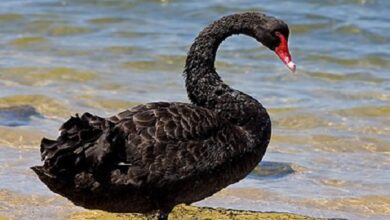Terrestrial and Aquatic Animals types and Characteristics
Terrestrial and Aquatic Animals
In this article we will provide you the information about the Terrestrial and Aquatic Animals.
Terrestrial animals
In biology , we speak of terrestrial animals to refer to those animals that live preferentially or entirely on land , that is, on the continental surface of the planet, as opposed to aquatic animals , which live mainly in water . Terrestrial animals are physically and organically adapted to life away from water.
In the early days of the planet, life began in water and spread to Earth ‘s surface about 500 million years ago , when the first vascular plants left the water. The first animal forms appeared about 70 million years later, consisting mainly of arthropods and bony vertebrates .
Initially, the animals could barely move on land from one aquatic habitat to another for brief periods. But the opportunities for food and territory on the continental surface, and fierce competition in the water, motivated adaptation to dry terrain. The process of adaptation of animals to emerged lands is called terrestrialization .
Terrestrial animals currently make up a significant percentage of life on Earth , highly diverse and nearly as abundant as marine life. The greatest density of these animals is found in rainforests and humid tropical jungles . However, it has adapted to virtually all climates , habitats and regions across the globe.
May serve you: animal kingdom
Characteristics
Although terrestrial animals are very diverse among themselves, they share certain minimal characteristics of adaptation to the terrestrial environment, although this adaptation can occur through different mechanisms and organs. Thus, the minimum characteristics of Terrestrial animals are:
- Breathing . Gone are the gills and other mechanisms of aquatic respiration, in favor of gas exchange. Oxygen is removed from the air by the lungs, trachea, or directly through the skin.
- Robust skeletons. Since body weight is less in water than in air, Terrestrial animals require strong, non-cartilaginous bone structures, especially in the limbs that support them. In the case of arthropods, the skeleton is on the outside (exoskeleton) and in vertebrates, on the inside (endoskeleton). There are exceptions to this rule, in the case of simple beings with an elongated body, such as earthworms, which do not have a skeleton.
- Senses adapted to the dry. Sight, smell and hearing, the essential senses for hunting prey or for defending against predators, distinguish one from the other, must, in the case of terrestrial animals, adapt to the air, where sound waves travel more slowly and there is much more abundance of light .
- Prevention of desiccation. Being in an environment where moisture is lost rather than gained, Terrestrial animals must have skin adapted to prevent moisture loss or with endogenous mechanisms to hydrate it, as well as structures that protect them from cold or heat . such as fur, feathers, etc. . For the same reason, Terrestrial animals that lay eggs have adapted them to have a strong shell that prevents desiccation.
Classification
It is never easy to classify Terrestrial animals, as their only really common feature is living out of water. But many of them have reproductive cycles that they still need, whether it’s going through an aquatic larval stage, or having to lay their eggs in the water, etc.
Thus, there are ten properly terrestrial phyla ( Phylum ) in the world: flatworms, nemerteans, nematodes, rotifers, tardigrades, onychophores, arthropods, molluscs, annelids, and chordates.
And taking into account their specific habitat , we can distinguish between:
- Surface animals. Those who inhabit the surface of the earth.
- Underground animals. Those that inhabit the inner layers of the Earth’s surface.
- Tree animals. Those who live on the branches of trees.
- Rupicolous animals. Those who live in the rocks.
- Sand animals. Those that inhabit the sands and gravels of different types.
- Troglobitic animals. Those who inhabit caves.
- Flying animals. Those endowed with wings and who can switch between the earth’s surface, trees, mountains , etc.
Examples of Terrestrial animals
Some detailed examples of Terrestrial animals are:
- The elephant ( Loxodonta africana ). Native to Africa and India, this gigantic quadrupedal mammal with a vegetarian diet is famous for its long trunk with which it can pick up objects and even bathe in wells. Many ancient civilizations used them as living war tanks.
- The lion ( Panthera leo ). Largest feline carnivore on the planet and king of the African savannah , this huge animal with yellowish fur is a natural predator that is in danger of extinction . Males have a characteristic dark mane.
- Giraffe ( Giraffa camelopardalis ). Known for its striking yellow fur with brown geometric spots, and for its long neck that allows it to eat the highest leaves of trees, this four-legged African animal is one of the most exotic known to mankind.
- Panda bear ( Ailuropoda melanoleuca ). One of the most curious furry bears in the world: black and white, and with a diet almost exclusively of bamboo, it is perhaps the most famous Asian animal on the verge of extinction. They are generally slow, sleepy and comfortable, weighing between 70 and 100 kilos.
- Komodo dragon ( Varanus komodoensis) . This huge reptile native to Indonesia can measure more than two meters in length and weigh almost 90 kilos, it has a very dangerous bite, as it has a large amount of bacteria in its mouth.
- Ostrich ( Struthio camelus ). Large bird, native to Africa and some regions of the Middle East, capable of reaching 70 km / h in a run. It has small wings that are not good for flying and a long neck with no feathers.
- Orangutan ( Pongo pygmaeus ). Species of orange long-haired primates, highly intelligent and arboreal habits, are closely related to the human being evolutionarily. With solitary habits, they eat an almost exclusive diet of fruits, leaves and roots.
Aquatic animals
Aquatic animals are all those that can live in water thanks to different adaptations that allow them to develop in this environment. At this point, it is important to point out that, when we talk about aquatic animals, we are referring to a group of individuals that need water as a habitat to survive, some of them are not able to breathe outside of it and others, on the contrary, yes, but they still need the aquatic environment to survive.
On the other hand, aquatic animals can live in salt or fresh water , and only a very few species are adapted to move from one type of ecosystem to another without this causing them problems, since, for example, an animal that lives in fresh water it does not have the necessary adaptations to live in salt water. Other animals tolerate certain trace salt concentrations, while some can be in super salty water.
Do aquatic animals only live in water?
Now that we know what aquatic animals are, and after commenting that they need this medium to survive, it is common to ask the question whether they really should all live in water or if they can also remain on land. Within the aquatic animals we find several types in this sense:
- Those who live their entire lives in water , like fish.
- Those that only live one of their stages in an aquatic environment, like some insects or amphibians.
- Those that come out of the water only to lay their eggs , like turtles.
- Those that alternate between the aquatic and the terrestrial environment, but cannot live completely away from the water because they depend on it, such as seals, lions and sea lions.
An interesting aspect is that animal life originated in water, so it is logical that there are animals that depend exclusively on this type of medium to live. Also, everything indicates that, for example, the ancestors of marine mammals were land animals that returned to the water and evolved to live in this type of habitat.
In this other article we talk specifically about characteristics and names of aquatic mammals .
Types of aquatic animals
There are several ways to classify aquatic animals. One of them is what we saw earlier, depending on the time they spend in the water. But the most common and widespread classification is the one that separates vertebrates and invertebrates. Let’s get to know the types of aquatic animals according to this division:
Vertebrate aquatic animal names
Aquatic vertebrates include:
- Lampreys : Jawless fish, similar to eels.
- Mixines : also called hagfish, with an elongated body.
- Cartilaginous fish : consisting primarily of cartilage, such as sharks, rays, and chimeras.
- Bony fish: whose skeletal constitution is mainly of the bony type.
- Lungfish : Very primitive fish that breathe directly from surface air.
- Amphibians : characterized by metamorphosis. Some are exclusively aquatic, while others are aquatic only during one of their developmental stages.
- Reptiles : some reptiles are exclusively aquatic, like certain snakes, but there are also those with semi-aquatic habits. Other reptiles intersperse between water and land, such as crocodiles and alligators. We also find certain turtles, such as sea turtles, that only come out of the water to lay their eggs.
- Birds : some types of birds depend mainly on water, for example, for food, as they are excellent swimmers, like penguins. We also find ducks, swans and pelicans, among others, which also feed in the water and can also fly.
- Mammals : we find different types of aquatic mammals, such as dolphins, whales, sperm whales, manatees, seals or walruses, among others. Some are fully adapted to the marine or freshwater environment, while others can leave the water but remain dependent on it.
Invertebrate aquatic animal names
Among invertebrate aquatic animals we find:
- Arthropods : a very varied number of groups, in fact the most diverse in the animal world. Some of the aquatic arthropods are horseshoe crabs, sea spiders, and most crustaceans such as crabs, shrimps, and lobsters, among others.
- Molluscs : for example, octopuses, squid, shellfish and chitons.
- Annelids : : are segmented worms. Some groups are marine, such as polychaetes.
- Flatworms : in general, they are parasites of vertebrates, some of fish, which is why they are also aquatic.
- Nematodes: also cylindrical parasites. Many are marine or live in fresh water.
- Echinoderms : are exclusively marine animals. They constitute a very varied group that include starfish, sea lilies, sea daisies and sea cucumbers, among others.
- Cnidarians : are also exclusively aquatic animals. Although most live in marine waters, some live in freshwater ecosystems. An example we find in jellyfish and anemones.
- Poriferans : similarly, they are aquatic animals and most of them live in the oceans, although some are freshwater. Here we find, among others, sponges, calcareous and vitreous sponges.
Although these are the best known, the truth is that there are many other groups of invertebrate aquatic animals, such as:
- Placozoans.
- Ctenophores.
- rotifers.
- Nematomorphs.
- Brachiopods.


